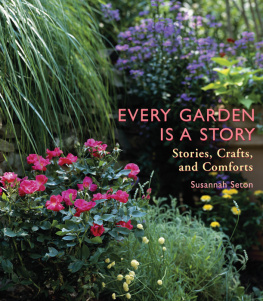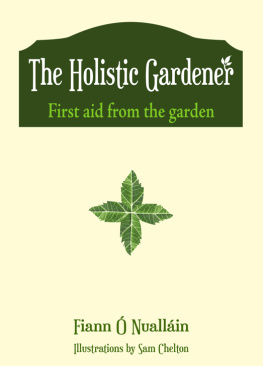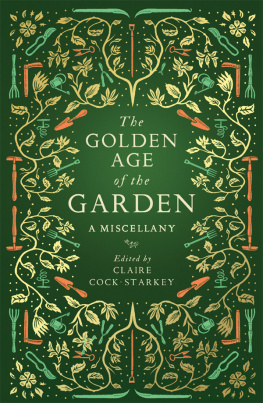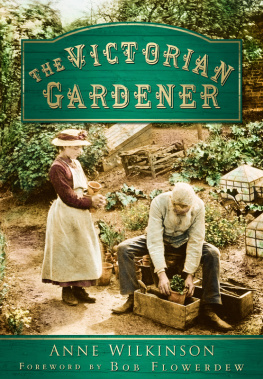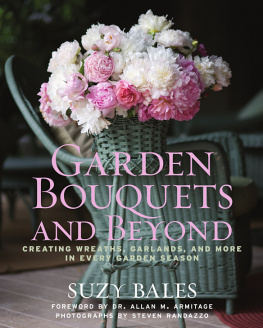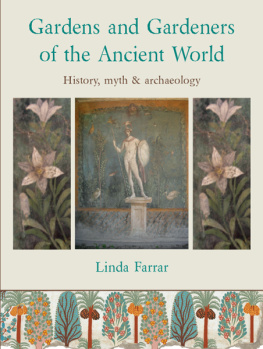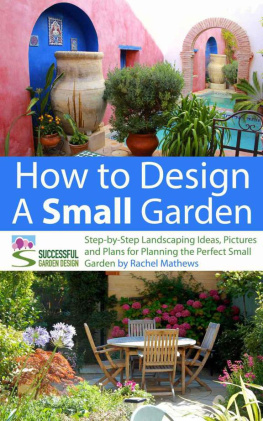Contents
Guide
Page List
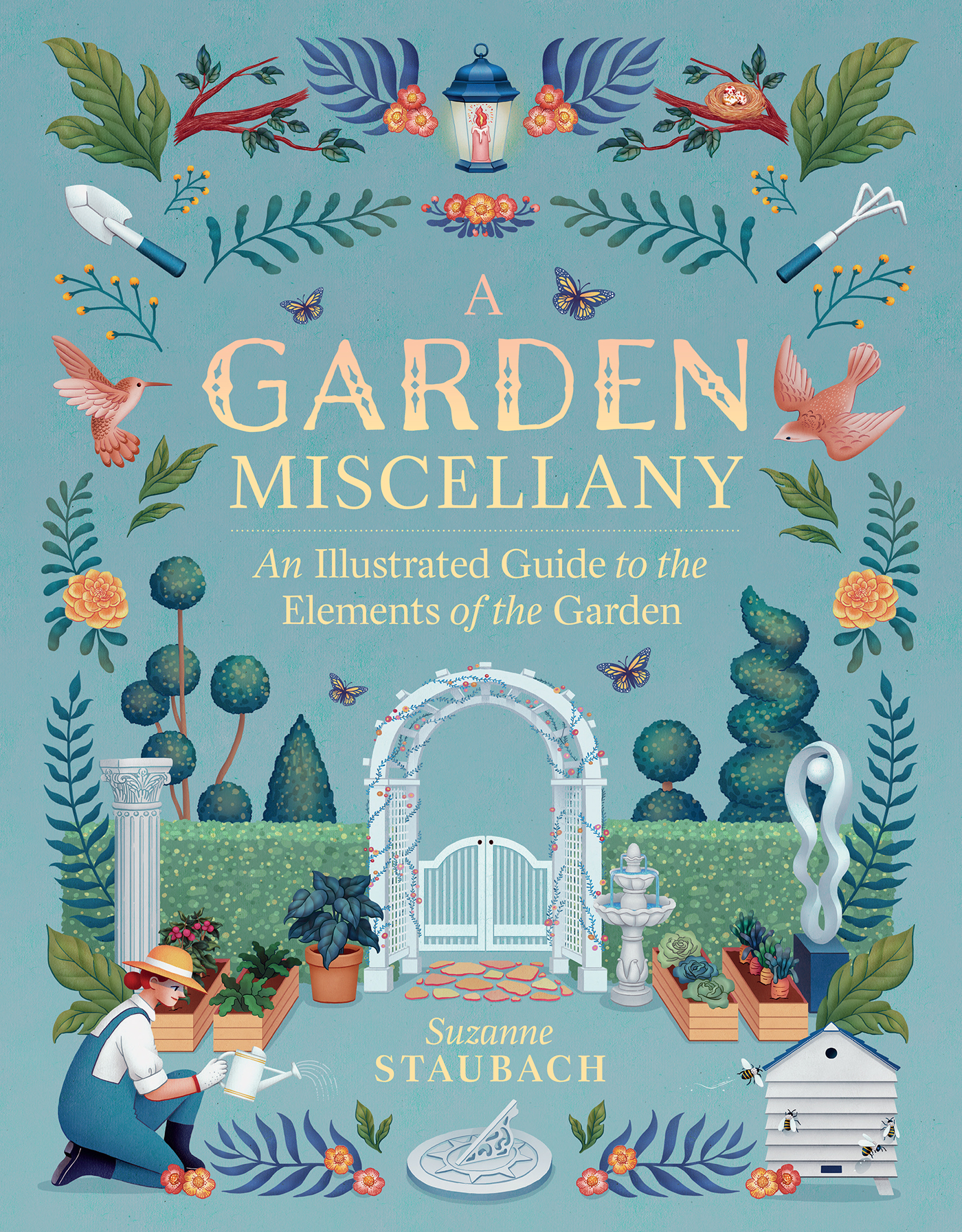
A
Garden
miscellany
An Illustrated Guide to the
Elements of the Garden

Suzanne
Staubach
Illustrated by Julia Yellow

For Joe
Contents

Introduction

If gardens were musical compositions, this book would be a look at the notes. Gardens have many notes, many parts. Paths, borders, beds, containers, pergolas, plants. Not all gardens, of course, include the same elements, but they do include some combination.
Gardens separated by millennia share remarkable similarities. My son sits with my granddaughters in the leafy shade of their grape arbor on a hot day, much as an Egyptian family sat under their grape arbor thousands of years ago. My cottage garden is a space of curves, but in the front, I have four beds in the universal quadripartite layout going back to the time of Cyrus the Great, circa sixth century BCE. Interpretations of each element vary in time and place and with individual gardeners, but the likenesses are strong.
With the benefit of world travel and interconnectivity, we can create gardens in styles from distant lands or times. Often, a specialty garden is part of a larger garden. Thus, within the greater landscape, we can incorporate a rock garden or a Japanese garden, so I count those sub-gardens also as elements.
There is much to discover in gardening. There is enough information, enough to learn, that each chapter of this book could be its own book. I have tried to distill the stories to their essence, to the anatomy underlying the gardens we visit and the gardens we make.
As I wrote, I wanted to add everything to my own garden. Oh, for a pond! Or a shepherds hut! For a week, I thought nothing would do but a pavilion. Gardening is dreaming.
Enjoy!
Suzanne (Suzy) Staubach
Willow Tree Pottery, Ashford, Connecticut


Alle
Alles can have the illusion of greater length if the path is narrowed at the dest ination end and the trees ar e grown at descending heights. 
Derived from aller, the French verb meaning to go, alle refers to a straight walkway or avenue, a promenade, usually lined with trees, occasionally with shrubs. Alles lead the garden visitor from a specific place, such as the entrance of a house, to a feature, such as a fountain or statue. The avenue can connect two gardens, serve as the drive to an estate, or guide movement through a park.
An alle can be the main axis of the garden, or sited elsewhere. In most cases, it is bordered on both sides by a single variety of tree or shrub. Specimens should be precisely and evenly planted in two rows, each plant directly opposite the plant on the other side of the alle. To be successful, measurements between the trees should be exact. Alles can have the illusion of greater length if the path is narrowed at the destination end and the trees are grown at descending heights. This is particularly useful for small formal gardens. As always in horticulture, and especially with an alle, one must take into account the size of the trees at maturity.
Andr Le Ntre, gardener to Louis XIV (the Sun King) is credited with popularizing the alle and forever associating it with French gardens, though other designers were working in the same idiom at the time. Le Ntre designed the spare-no-expense gardens at Versailles, which were meant to show off the kings wealth and power. Versailles was also designed to keep the nobles where the king could watch over them and hold their power in check. Strolling the magnificent alles that stretched across the gardens became a fashionable way for these men and women of the court to see and be seen. Le Ntres work at Versailles was inspired by the Italian Renaissance alles, lined with slim cypress trees. These in turn were, perhaps, inspired by the alles of the ancient Persians.
The seventeenth-century diarist, author, and gardener John Evelyn, writing in Elysium Britannicum, or The Royal Gardens (his magnum opus, a never-finished book of advice for gardeners), admonished that alleys must not be interrupted, as they do with their length alone afford a most gracious and pleasant perspective, whilst they serve to decline and concur in a point, especially if planted with (tall) trees, then which nothing can be more ravishing and agreeable. Who would not want a garden element that is ravishing and agreeable?
Edith Whartons alle at her Berkshire home, The Mount, is classic in execution and relies heavily on structure. The lime walkway of pleached European linden trees connects two gardens: the colorful French Flower Garden and the sunken Italian Garden. It runs north to south, parallel to her house rather than from it, and is overlooked by her balustraded terrace. Pleached trees are planted in a line and the branches are pruned and woven together, creating a sort of hedge. These trees provided shade for Whartons guests, and add a strong note of formality.
Many different trees can be used to create an alle: hawthorn, linden, laburnum, and hornbeam are traditional; oak, beech, and maples are stately and fitting for long drives and promenades; slim white birch can be used for airiness. Alles can be made of fastigiate or columnar varieties of trees. Shrubs such as yew, rhododendrons, or hydrangea are also successful.
These trees and shrubs can be pleached; clipped into cubes, balls, or pyramids; allowed to grow together over the alle to form a tunnel; or grown to great girth and height. Deciduous species work best if you want to form a tunnel. The late English garden designer and writer Rosemary Verey famously used yellow laburnum trees underplanted with purple allium for her alle at Barnsley House in the Cotswolds.
Careful consideration should be given to the surface of the alle. Shade and foot traffic make a lawn path difficult. Brick, stones, pavers, gravel, and bark mulch all work well. Since you are planting in shade thick with tree roots, underplant with species that will thrive in such conditions: small bulbs, ground covers, and shallow-rooted plants such as vinca.
Because they require considerable maintenance if clipped or pleached, as well as extensive space, alles are most often seen in great formal gardens and parks of generous acreage, supported by trained staff and adequate funds. However, with imagination and a careful choice of trees or shrubs, alles can enhance small gardens, too. A fieldstone path with a dozen or so plants of panicle hydrangea Limelight underplanted with catmint or vinca minor would be lovely.


